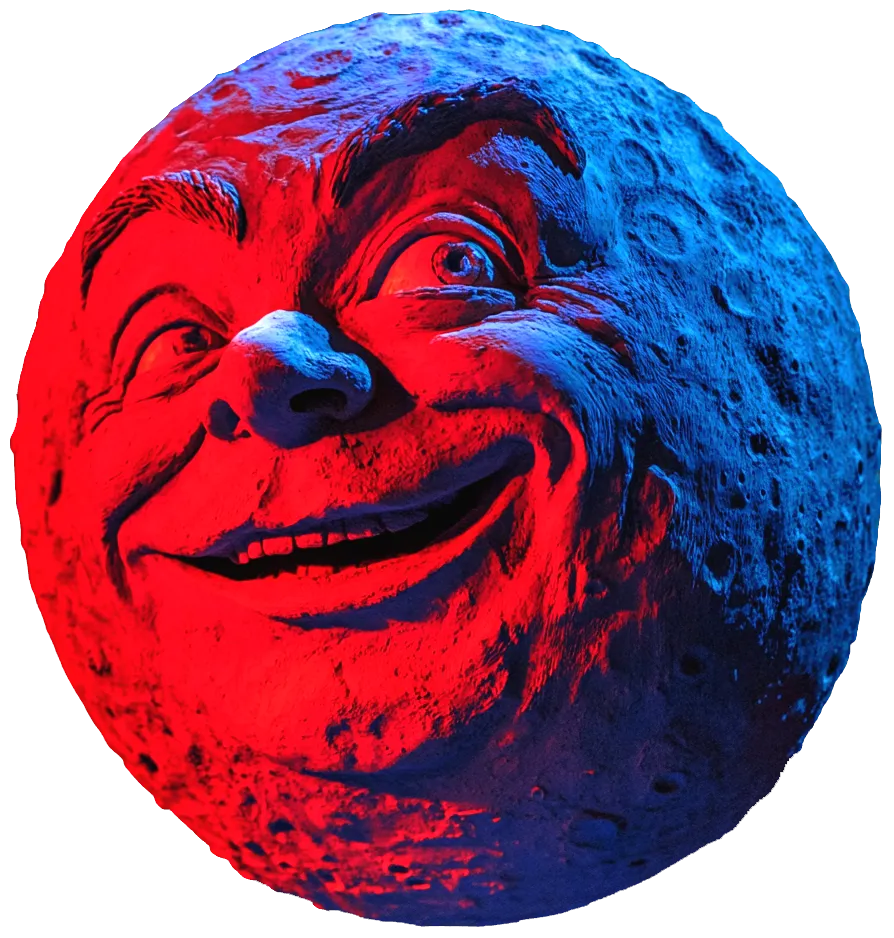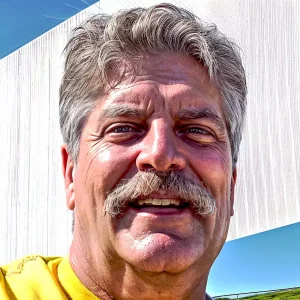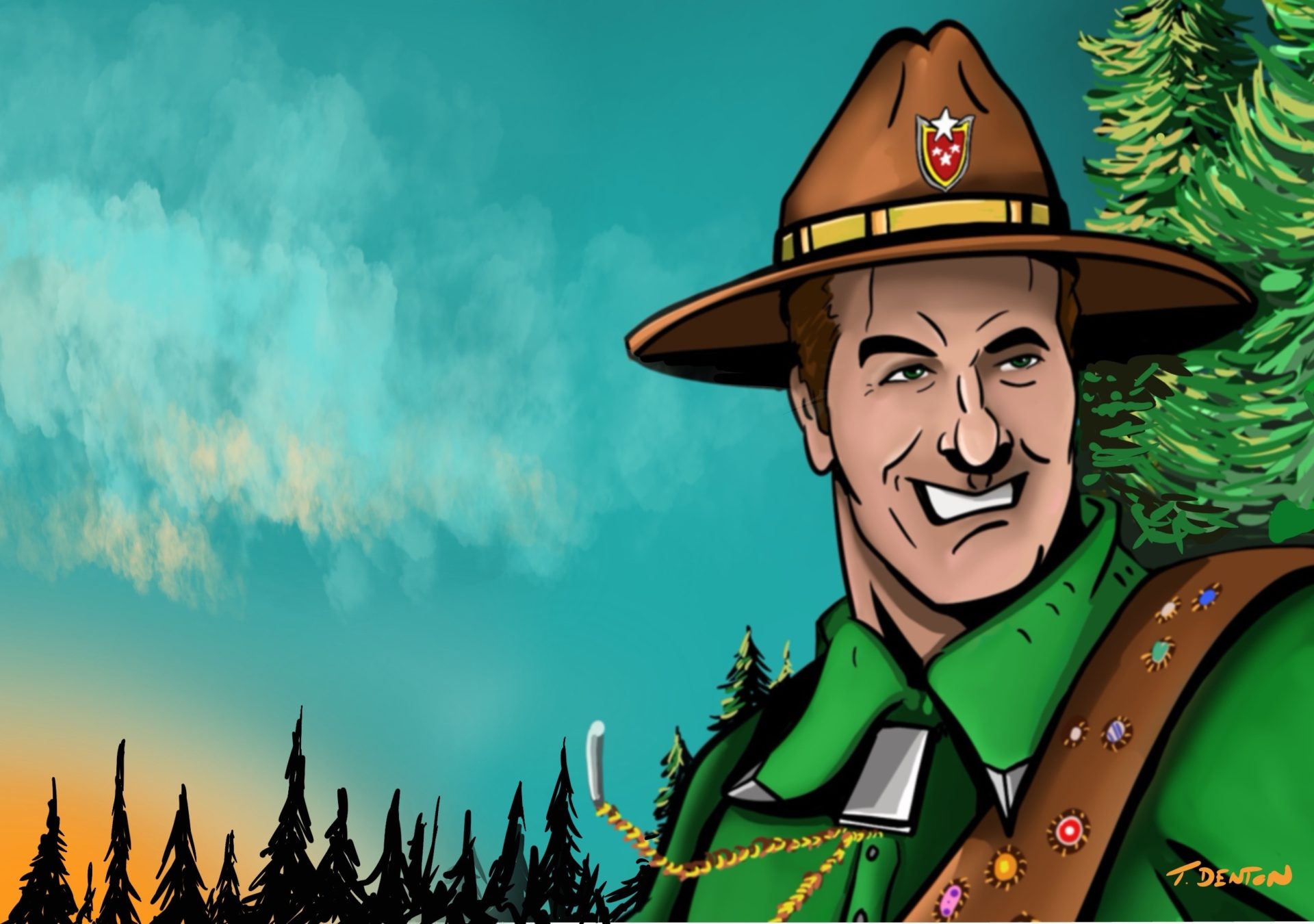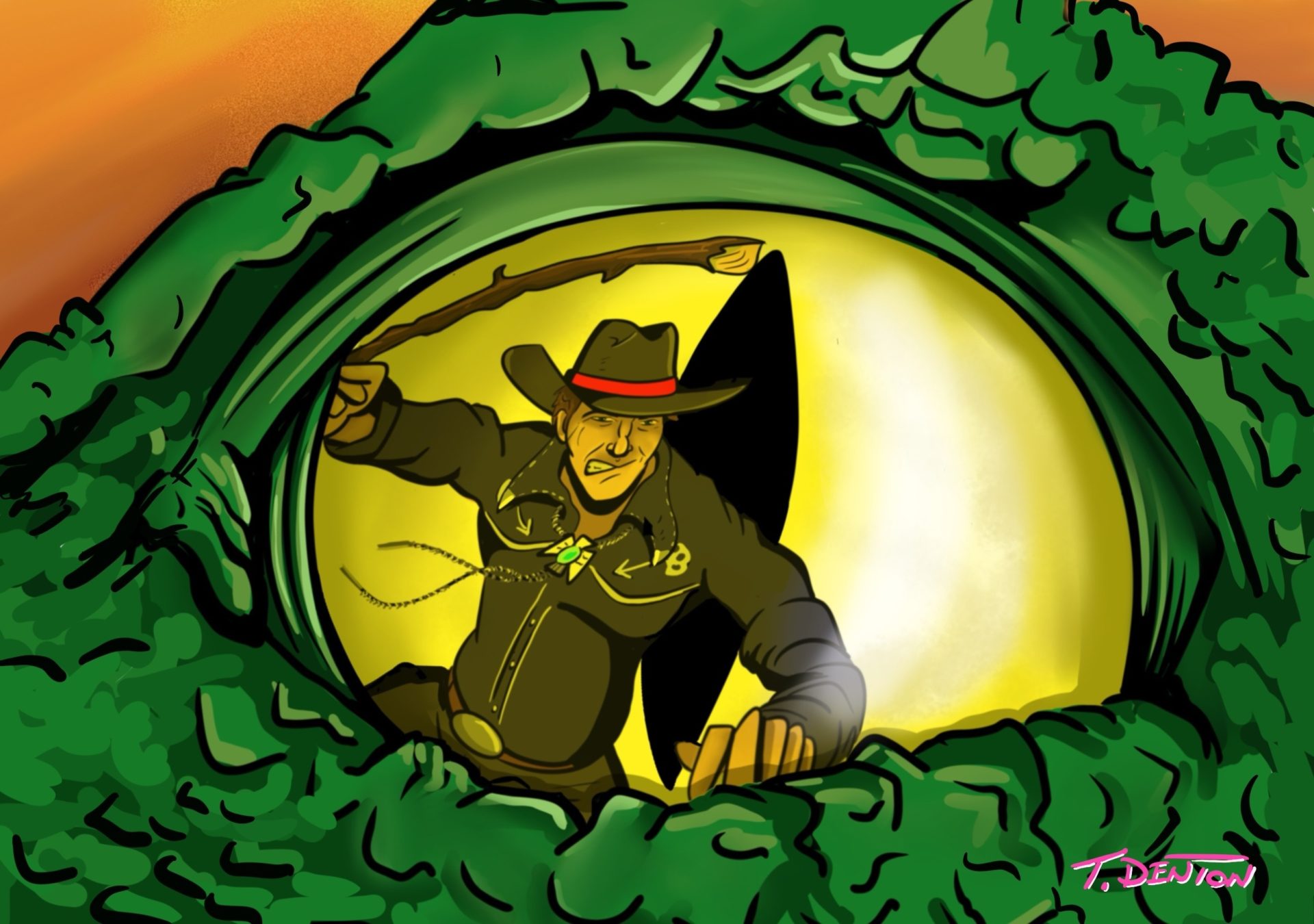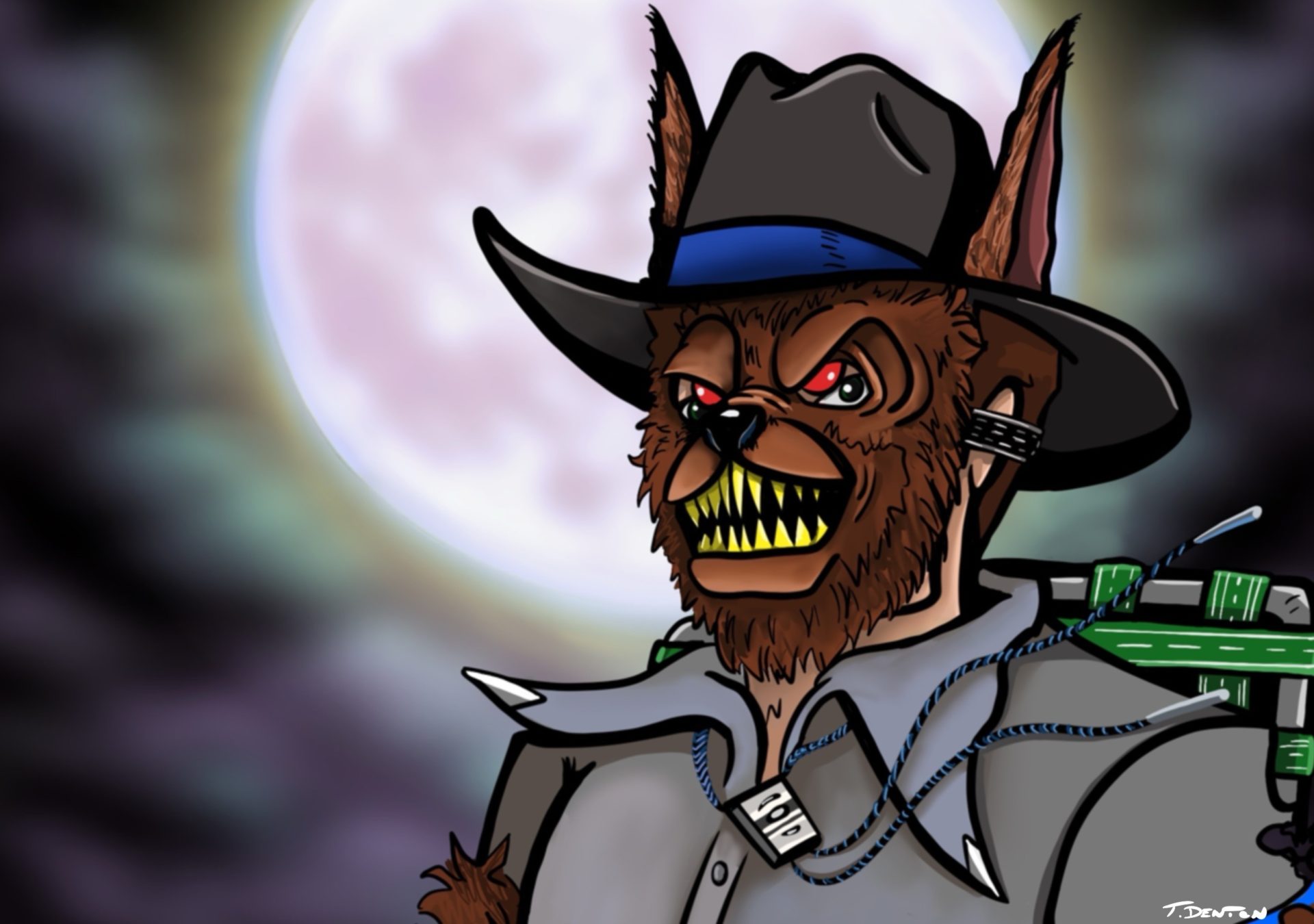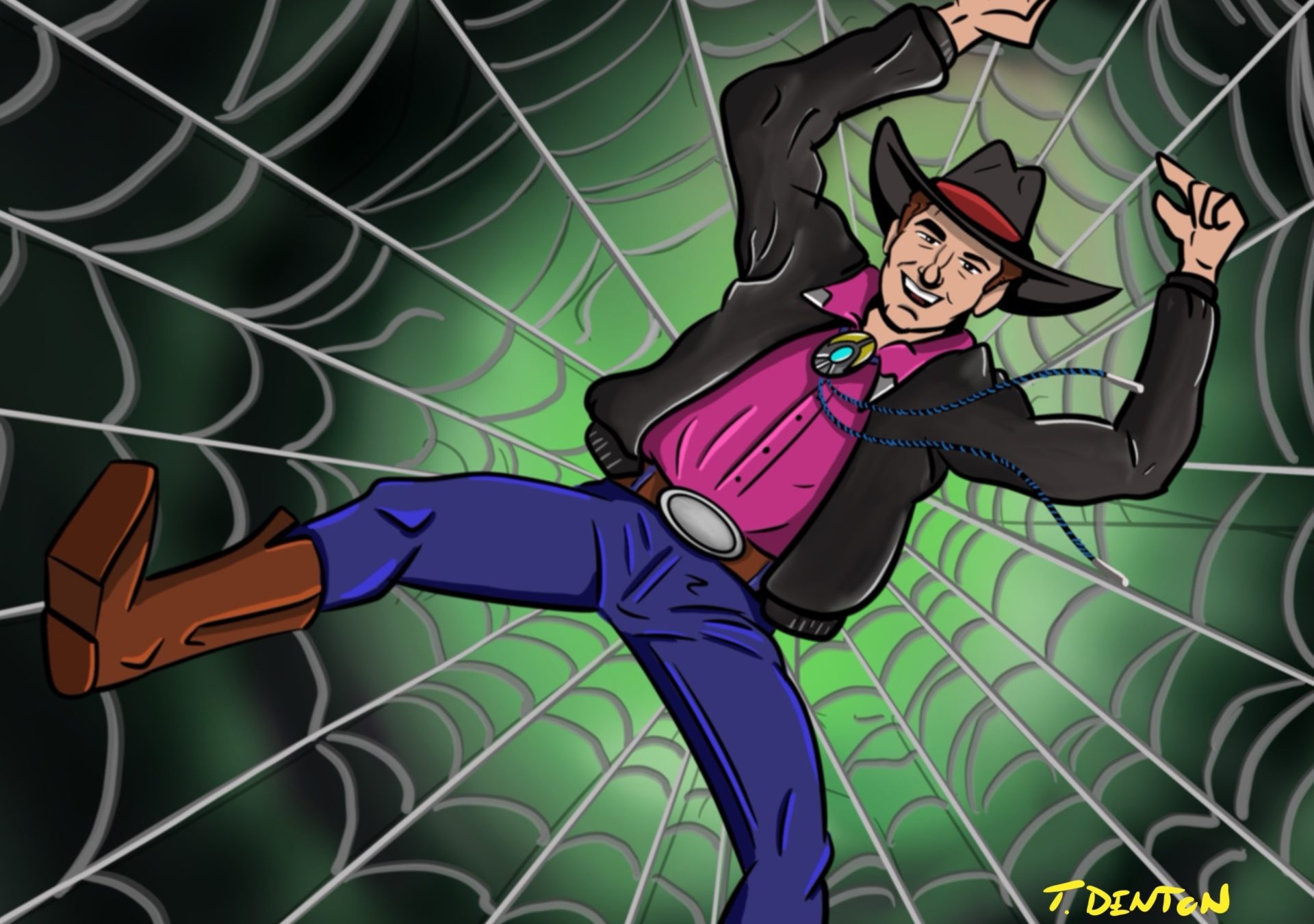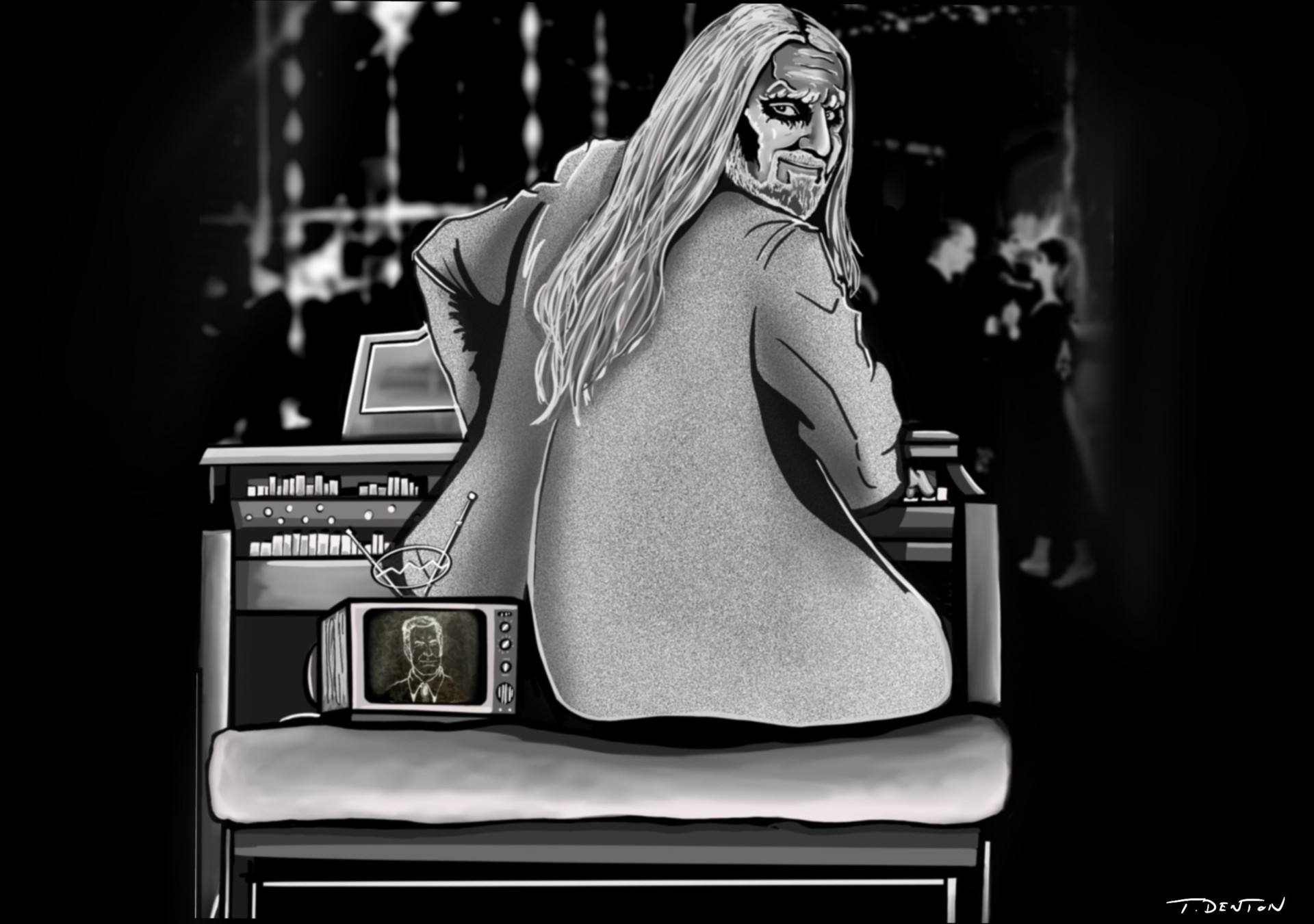
Art by T.J. Denton (@TDenton_1138 on Twitter) — visit his store!
’ll admit it: when I see Joe Bob, “nerd” isn’t the first word that comes to mind, but he did his best to earn that designation as he drove deep into the history, text, and subtext of Carnival of Souls.
Though you will rarely hear Joe Bob (or anyone affiliated with The Last Drive-In) advocating censorship, he kicked off the evening noting some phrases that really shouldn’t be used anymore. These are the phrases: “Hidden Gem”, “Neglected Masterpiece” (because he said, “Some movies are just neglected”), “Rediscovered Cult Classics,” “Taking the Festival Circuit by Storm,” “Lovingly Restored,” and “Rescued from Obscurity.”
Darcy pointed out that JB used all those phrases to describe Carnival of Souls. He responded that those phrases could properly be applied only to that particular film, and for the rest of the night, Joe Bob explained why that’s the case. It was a deep, nerdy dive.
There are many misconceptions about Carnival of Souls, one of the biggest being that since it was director Herk Harvey’s only feature film, he was an amateur filmmaker. He wasn’t; he was a professional filmmaker, but he made educational films, industrial films and commercials. Joe Bob reminded us that back in the day, not many people had access to the equipment needed to make a film. Tobe Hooper, Robert Altman, and George Romero also made other kinds of films before working on their first feature, but they had the good fortune to continue to make features. That wasn’t the case for Herk Harvey.
Harvey was inspired to make the film while driving by the Saltair Pavilion in Salt Lake City, Utah. It was an amusement park and event center built back in 1893 as a joint effort between the Church of Jesus Christ of the Latter-day Saints (the Mormon Church) and the Salt Lake City and Los Angeles Railway. It was meant to be the Coney Island of the West, except more, you know, wholesome.
After Harvey saw the ballroom, the largest of its time, allowing for 5,000 couples to dance. Harvey told screenwriter John Clifford that he wanted the climax of the film to be ghosts and ghouls dancing in that room, and he could write whatever he wanted to lead up to that point. He did want the films to have “the look of (Ingmar) Bergman and the feel of (Jean) Cocteau”.
Harvey could use equipment from his production company, Centron Films, and he was able to recruit much of his cast from among his students – he was a professor of theater at Kansas University – and he took the role of lead ghoul for himself. But he still needed his star, his leading lady. One of his students, Sydney Berger, was going to New York City, so he was entrusted with finding an actress to play the church organist, Mary Henry.
Candace Hilligross was finally making progress with her career. She had been offered a role in a more conventional film, but it required her to do a nude scene. So she took Berger and Harvey’s offer of $2,000 and a film shoot in Kansas and Utah.
It was not an easy shoot.
Harvey made the challenging choice of shooting the film in sequence. So as the character, Mary, traveled west from Kansas to Utah, the cast and crew did as well. Harvey saved money on locations by bribing workers on duty to allow them to shoot, rather than paying for permits. He did get a permit to shoot at Saltair Pavilion, but that wasn’t expensive. Saltair had been closed for several years and no one knew what to do with the place.
Marketers didn’t know what to do with the film, either. It was a horror film, but really felt more like the existential journey of a woman trying to find herself. Though there are a couple of effective jump scares, there wasn’t much violence or gore to sell to the drive-in audience. Harvey had considered including nudity in the department store changing room scene and the bath scene, but there was no guarantee Hilligoss would have agreed to that. So one less selling point for marketers.
(This, of course, led to another spirited discussion between Joe Bob and Darcy about nudity always being essential to a film’s plot.)
Carnival of Souls had its world premiere at the Main Street Theater of Lawrence, Kansas, in September 1962. It went on to do not much business in theaters and drive-ins. The investors’ money was lost. And to make things a little worse, the copyright wasn’t included on the film and it immediately went into public domain.
But as the years passed, the film became quite popular on late night TV. Audiences found it, and liked it. And TV stations really liked not having to pay to show it.
So, this Hidden Gem, this Neglected Masterpiece, became a Rediscovered Cult Classic that took the Festival Circuit by Storm after being Lovingly Restored and Rescued from Obscurity. Academics discovered the film and found the themes academics love to write about: the Oppression of the Patriarchy, Existential Angst, the Loss of Faith, etc.
Now it may seem like I’ve been going on for a while here, but I’m just skimming the surface of Joe Bob’s lecture on the film. For his more abbreviated take on the film, here are Joe Bob’s Drive-In Totals:
Since the evening’s film was in black and white, Joe Bob suggested that producer Austin to allow them to be in black and white. Joe Bob thought Darcy looked a bit like Golden Age film star Veronica Lake. And John Brennan at the keyboard looked like an awful lot like one of the film’s ghouls.
Darcy thought JB looked like Golden Age TV star Art Carney.
The mail bag letter included praise for the screening of The Autopsy of Jane Doe and Joe Bob shared an elephant joke. And the Mutant Family was left a little nerdier, which is not a bad thing.

